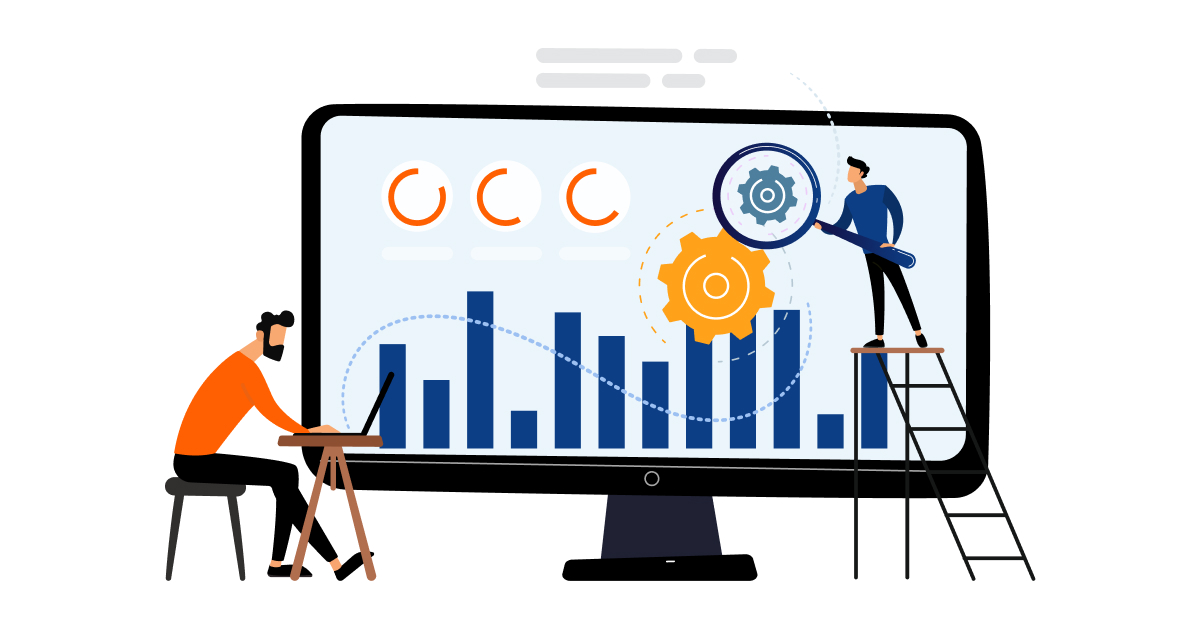
Employee productivity monitoring is the use of various methods of workplace surveillance, mainly to improve the workforce’s productivity and to enhance an organization’s human resources. So, in simple terms, employee monitoring is mainly about gathering information about the activities of each employee.
Being a sub-set of workforce management, knowing that productivity is the key to business success, it’s crucial to understand how team members spend their work. This is true for every line of business, irrespective of the workplace framework, i.e., remote and on-site operations.
Table of contents
- Remote Employee Productivity Management
- How Smart Productivity Monitoring Can Enhance Operational Efficiency of a Remote Customer Support Team
- 3 Best Practices and Tools to Use for a Rewarding Employee Productivity Monitoring Procedure
- Looking for a Perfect Remote Work Monitoring Platform? Your Search Ends Here with Leapmax
Remote Employee Productivity Management
Under remote operation, employee monitoring goes beyond the core time-tracking functionality of attendance or managing schedules and workflows. The goal is to build a culture of trust and transparency while ensuring productivity and respecting employee privacy.
This is why monitoring needs new and innovative ways to scale production under remote work. In fact, some studies reveal increased productivity in the remote workspace. According to an article published in Flexjob, 85% of businesses reported increased productivity in their company.
This improvement is mainly due to the increased flexibility employees get under remote work. So, with a proper strategic approach, remote work can easily be a win-win situation for both employer and employee.
Under remote workspace, employee monitoring does not only calculate the activity percentage of every member. These monitoring strategies make the roadway attach certain parameters of data security nods.
For example, features like live barge-in or system screen capture clearly show malpractice conducted by any user. These features work as a data security tag, although they are primarily built to measure any kind of productivity loss.
Again, close monitoring strategies help a supervisor defeat the chances of technical interruptions or at least find the glitch that is causing the intervention. So, whether it is data security or finding technical glitches, the significance of a smart employee monitoring strategy is much higher under remote operation than its “on-site” counterpart.
How Smart Productivity Monitoring Can Enhance Operational Efficiency of a Remote Customer Support Team
With the sudden outbreak of the Novel coronavirus in early March 2020, most of the customer support teams worldwide are working remotely. Yes, for most of them, the experience of working outside “office premises” is either zero or very little. That’s why a change in the operations of contact centers from on-site to remote locations is challenging. This is true for both agents and the management team simultaneously. Now, as a customer support team member for a brand, I directly deal with customer satisfaction.
So, the company is responsible for ensuring that employees meet every pre-decided customer satisfaction parameter, even in remote operations. Handling customer queries, especially during this pandemic, promotes brand value to the next level.
Hence, contact centers should not compromise customer satisfaction even during remote operations. To overcome remote working challenges, it’s important to monitor every team member’s activity for unified and fulfilling customer support. Perfect remote productivity monitoring software will keep your customer support team ahead. For example, to review the call performance of every conversation, using call recording software becomes mandatory under the remote contact center.
This helps deliver feedback and trains every remote agent to improve their customer-handling skills. The same happens with features like screen capture. It gives insight into employee engagement and useful evidence to identify suspicious behavior that might cause productivity loss. So, whether coaching employees or pinpointing the area of improvement, monitoring always improves the operation efficiency of your remote contact center when implemented smartly.
3 Best Practices and Tools to Use for a Rewarding Employee Productivity Monitoring Procedure
With more technical advancements, remote workforces are becoming increasingly common. Research conducted by Global Workplace Analytics shows a 159% increase in remote work between 2005 and 2017. Surprisingly, this study was conducted long before the current pandemic. Given the current situation, this has become more of a necessity for most organizations. This is why it has never been more important to use the best remote work monitoring strategy, clubbed with the appropriate productivity monitoring software.
Yes, productivity is the livelihood of every business, irrespective of the workspace (in-house or remote); if your workforce is not productive enough, your business will suffer. As an impact, your customers will get dissatisfied with your brand, and eventually, you will be replaced by your competitors who serve them better. Implement your best business approach through a conclusive employee productivity monitoring outlook to overcome this bottleneck.
1. Time Tracking and User Status
The first step to measuring remote employee productivity accurately is time tracking. Tracking hours is helpful not only from a payroll perspective but also from a payroll perspective. It clearly shows how much time an employee spends on a particular task to get completed. With a smart time tracking tool, you will get a comprehensive outline of a remote worker’s actual working hours without interrupting their work. All these tracking data can be used for enhanced productivity and underperforming employees while rewarding the superstars.
Most importantly, it will give a clear picture of the entire remote workforce’s capability and an early sign of manpower deficiency to the management team. Besides time tracking, real-time activity status helps to understand every online or active user’s live working status. Capturing keystrokes, another way of close monitoring clearly shows an employee’s engagement level toward his task.
2. Customizing Online Activity
Under remote operation, there will always be a high chance of browsing unproductive websites since there is no face-to-face interaction. For example, surfing social media websites through the working laptop can decrease productivity for a remote employee. It is not only about social media; a person can also access any useless website for his/her work purpose. This not only reveals a chance of productivity loss but also harms data safety and security.
An employee productivity monitoring tool with a feature like “website whitelisting” is best. This allows the user to access only those websites that are whitelisted or authorized by the organization. So, it works as the ultimate remedy to stop any remote worker from accessing a website that is both useless and may hamper data security. Along with whitelisting, monitoring every online activity or internet use will give you a complete picture of your remote working team’s digital activity.
3. Screenshots and Other Tools
One of the basic and most useful live tracking features is regularly capturing screens/displays of every remote employee’s system. Taking screenshots gives you accurate and live insight into what an employee does during working hours. If any malpractice is conducted against your organization’s remote operation adherence, this feature best identifies it. Also, it gives a clear insight into any troubleshooting that might hamper an employee’s productivity.
Another useful tool that ensures zero interference or pauses in the workflow is live monitoring of the user’s system battery status. Monitoring this allows a supervisor to notify the team members beforehand. What’s important here is making monitoring strategies effective and practical rather than more instructional, which may cause employee dissatisfaction. This will sequentially enhance the operational efficiency of your entire remote workforce with less effort and to a great extent.
Looking for a Perfect Remote Work Monitoring Platform? Your Search Ends Here with Leapmax
The sudden spread of the COVID-19 virus disrupted our daily lives more or less to some extent. Until then, there is no permanent solution regarding vaccines or medicine; maintaining social distancing or staying behind locked doors is the only current remedy to stop the spread of this easily transmissible disease.
However, business continuity regarding customer support or marketing should not be compromised. For most leading business houses worldwide, organizing remote operations is one of the best solutions. Choosing the right remote working solution for your remote workforce is important for maintaining the same output. It should accurately cover two basic facets: employee monitoring and data safety and security. Ideally, workforce monitoring is related to productivity.
However, in a broad sense, close monitoring can also ensure a complete solution to your remote data safety concern. Leapmax, as a remote workforce management solution, is specially designed while keeping this concept only. Maintaining productivity while keeping data security intact is the “mantra” for a remote business process. That’s why all of its features come with this dual-beneficial idea. From screenshot-capturing features to website whitelisting, this platform is committed to providing you with the best remote productivity management for your business.
Its one-stop solution includes monitoring real-time user status, checking battery status, website whitelisting, and application tracking. The best part is that Leapmax not only helps you to measure productivity, but you can publish productivity reports under this platform as well.
As a report management platform, Leapmax aims to improve your remote team’s operational efficiency while helping you keep the entire team on the same page. With Leapmax, you can ensure your remote operation runs at peak performance, which is critical in today’s competitive business landscape.







